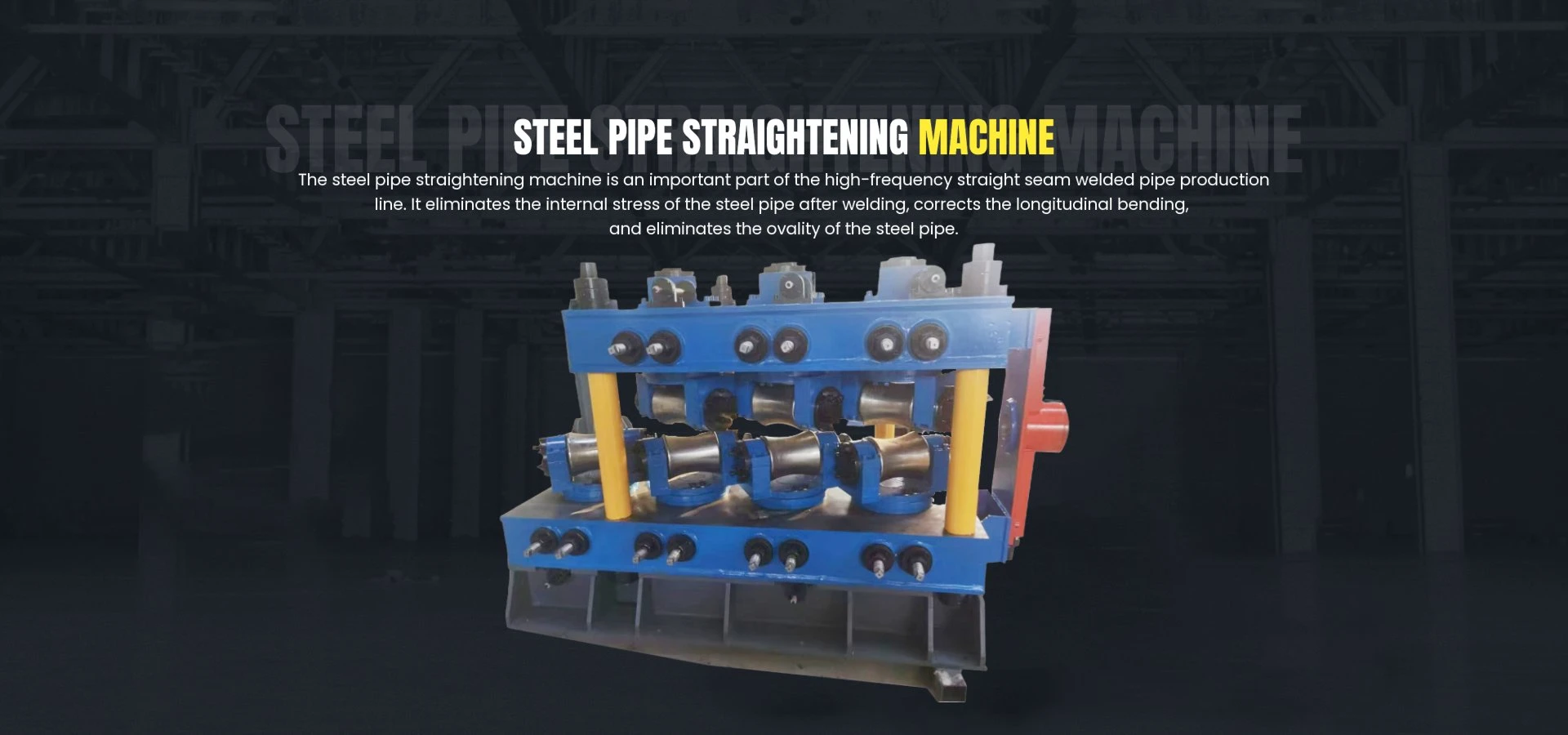ss pipe making machine
Understanding SS Pipe Making Machines An Essential Guide
In the manufacturing world, the production of stainless steel (SS) pipes has become an integral part of various industries, such as construction, automotive, and food processing. One of the key components in this vertical is the SS pipe making machine, a specialized piece of equipment designed to produce high-quality stainless steel pipes efficiently and effectively. This article delves into the functionality, components, and applications of SS pipe making machines, providing a comprehensive understanding for manufacturers and engineering professionals alike.
What is an SS Pipe Making Machine?
An SS pipe making machine is a sophisticated assembly of tools and technology used to form pipes from stainless steel billets or strips. The process typically involves several stages, including cutting, bending, welding, and finishing, to ensure that the final product meets the required specifications and standards.
The machine operates by utilizing advanced processes such as rotary piercing, elongation, and seamless extrusion. These methods allow for the production of pipes ranging from small diameters to large sizes, with either seamless or welded configurations.
Key Components of SS Pipe Making Machines
1. Raw Material Feeding System The initial step in pipe production involves feeding stainless steel strips or billets into the machine. Modern SS pipe making machines are equipped with automatic feeding mechanisms that ensure a consistent supply of material for uninterrupted production.
2. Forming Section This component shapes the raw material into the desired pipe form. Various forming techniques, including roll forming and bending, are employed depending on the specifications of the final product.
3. Welding Unit In the case of welded pipes, a welding unit is crucial. It joins the edges of the formed strip or sheet using processes such as electric resistance welding (ERW) or tungsten inert gas (TIG) welding, thus creating a solid structure.
ss pipe making machine

4. Cooling System Post-welding, pipes often undergo cooling before being cut to size. A dedicated cooling system ensures the integrity of the pipes by preventing warping or distortion.
5. Cutting and Finishing Equipment Once the pipe reaches the desired length, cutting equipment slices it accordingly. Finishing processes, which may include polishing, deburring, and coating, ensure that the pipe meets aesthetic and functional requirements.
6. Quality Control Systems These systems are essential for monitoring the production process. Advanced SS pipe making machines often feature automated inspection systems that test pipe thickness, diameter consistency, and surface quality.
Applications of SS Pipes
SS pipes produced by these machines play a pivotal role in numerous applications
- Construction Sturdy and corrosion-resistant, stainless steel pipes are frequently used in structural applications, plumbing, and HVAC systems. - Oil and Gas SS pipes are ideal for transporting fluids under high pressure and are often employed in the oil and gas industry for both offshore and onshore operations. - Food and Beverage Industry The hygienic properties of stainless steel make it suitable for applications in food processing and brewing, where cleanliness and durability are paramount.
- Chemical Processing SS pipes resist corrosion from various chemicals, making them essential in chemical manufacturing plants for transporting reactive materials.
Conclusion
The SS pipe making machine is a cornerstone of modern manufacturing, offering the ability to produce durable and high-quality stainless steel pipes that meet a broad spectrum of industrial needs. Understanding the components and processes involved not only aids manufacturers in optimizing their production capabilities but also ensures that they can maintain high standards of quality and efficiency. As industries continue to evolve, the importance of SS pipe making machines will undoubtedly grow, cementing their role in the future of manufacturing. Whether for construction, oil and gas, food processing, or chemical applications, the expertise behind these machines will remain a vital component of industrial success.
-
High Frequency Straight Seam Welded Pipe Production Line-BzZhou Xinghua Machinery Equipment Manufacturing Co., LTD.|Precision Welding, High EfficiencyNewsJul.30,2025
-
High Frequency Straight Seam Welded Pipe Production Line|BzZhou Xinghua|Precision Welding&EfficiencyNewsJul.30,2025
-
High Frequency Straight Seam Welded Pipe Production Line - BzZhou Xinghua|Precision Engineering&EfficiencyNewsJul.30,2025
-
High-Frequency Straight Seam Welded Pipe Production Line-BzZhou Xinghua Machinery Equipment Manufacturing Co., LTD.NewsJul.30,2025
-
High-Frequency Straight Seam Welded Pipe Production Line-BzZhou Xinghua Machinery Equipment Manufacturing Co., LTD.|Precision Manufacturing, High EfficiencyNewsJul.30,2025
-
High Frequency Straight Seam Welded Pipe Production Line-BzZhou Xinghua Machinery Equipment Manufacturing Co., LTD.|Precision Steel Pipe Manufacturing&Industrial EfficiencyNewsJul.29,2025


